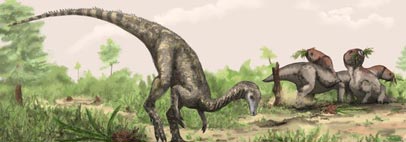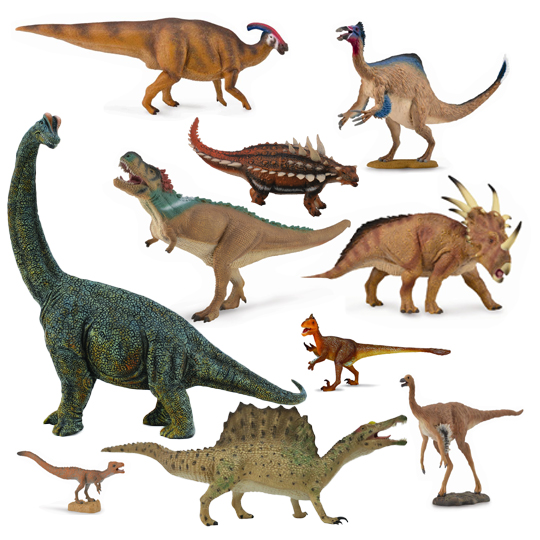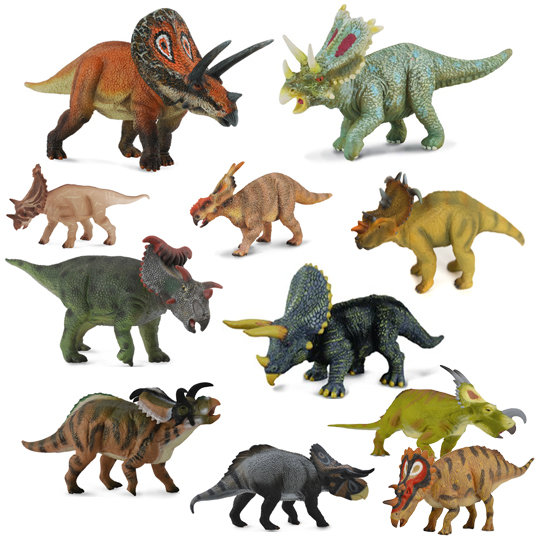Answering Amazing Questions About Dinosaurs – Part 2
Answering Questions About Dinosaurs – Part 2
Our thanks to the teaching team at Ewloe Green Primary in Wales, who sent us a list of questions that had been compiled by the Year 1 pupils as they studied their dinosaur themed term topic. The enthusiastic, budding palaeontologists have been carrying out a lot of research into prehistoric animals as they prepare for our visit to deliver some dinosaur workshops at the school.
Quite a range of questions had been put together by the children, some of which we hope to address in our workshops with the classes. The questions and our notes have already been incorporated into the lesson plans emailed to the school. However, there are still one or two outstanding enquires, such as the question from Amelia who wanted to know why do some dinosaurs have four legs and some only two?
Why Do Some Dinosaurs Have Four Legs and Some Only Two?
The very first dinosaurs were not giants, they were small, fast-running carnivores that appeared more than 235 million years ago during the Triassic. These dinosaurs were bipeds, this means that they ran around on their hind legs, they did not use their front limbs, their arms for walking around. Humans are bipeds, we walk around on our back legs and use our arms and hands for other things. Human babies learn to crawl and they move around on all fours, but they soon learn to walk upright.
One of the Very First Dinosaurs Nyasasaurus from Africa

Picture credit: M. Witton/NHM
Quadrupeds and Bipeds
From these small, meat-eating ancestors the dinosaurs quickly evolved into lots of different species of different shapes and sizes. As some dinosaurs adapted to eating plants rather than meat, they began to develop bigger bodies to help them cope with digesting tough plant food. As these plant-eating dinosaurs got bigger and heavier, they found it easier to move around on all fours, with all their limbs helping to support their weight. All the very heaviest dinosaurs described so far, the long-necked dinosaurs like Apatosaurus, Brontosaurus and Brachiosaurus, for example, moved around on four legs. Animals that walk on all fours are called quadrupeds.
Around 1,200 Different Types of Dinosaur Have Been Described To Date

Picture credit: Everything Dinosaur
Prehistoric Animals Term Topic – Supporting the Teacher
- Challenge the class to sort dinosaur models into animals that walk on two legs and animals that walk on all fours.
- Can the children research animals alive today and classify them into different groups based on how they move?
Why Do Some Dinosaurs Have Horns?
Sorcha wanted to know why do some dinosaurs have horns? Lots of dinosaurs had horns, in fact there is a group of dinosaurs called the “horned dinosaurs” as most of these types had long horns on their faces or heads and all of them had frills of bone at the back of their skulls. Famous horned dinosaurs include Triceratops, Protoceratops and the very spiky Styracosaurus (see picture above).
Scientists think that these horns helped dinosaurs to:
- Stay safe – the horns, spikes and frills of bone around their necks helped protect them from attacks from other dinosaurs.
- To signal to other dinosaurs in their herd – dinosaurs like Triceratops and Styracosaurus probably lived in large groups (herds), they could have used their big horns and frills to signal to the other group members.
- To find a mate – dinosaurs probably had colour vision, as good as ours. They could see colours, just like we can and the horns and frills may have been brightly coloured and used in displays to help these dinosaurs to find a mate. Many birds are brightly coloured and have large feathers which are not helpful when it comes to flying but are used to help these creatures display and show-off – a peacock for example.
Lots of Different Horned Dinosaurs – How Many Can You Count?

Picture credit: Everything Dinosaur
The image (above) shows some of the horned dinosaur models in the CollectA Prehistoric Life range.
To view this range: CollectA Prehistoric Life Figures.
For Teacher
- Challenge the class to write a fact sheet all about the famous, three-horned dinosaur Triceratops.
- Find pictures of horned dinosaurs, can the children group them into two types of horned dinosaur, one group with large nose horns and small horns over their eyes and a second group with small nose horns and large horns over their eyes?
- What types of animals have horns today? Can you make a list and work out what these animals use their horns for?
Visit the Everything Dinosaur website: Everything Dinosaur.

